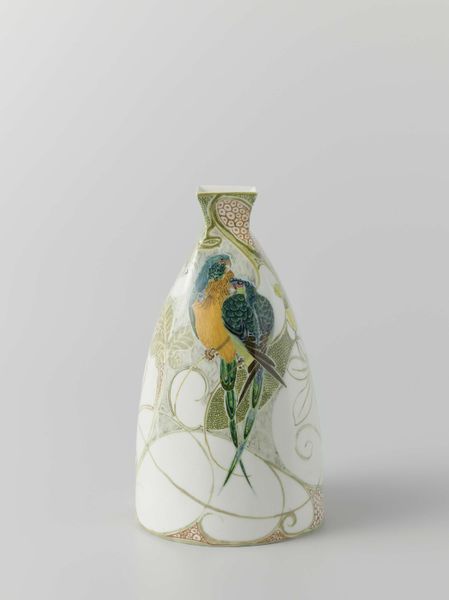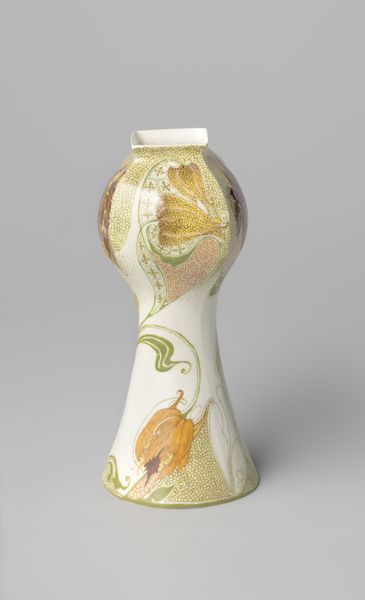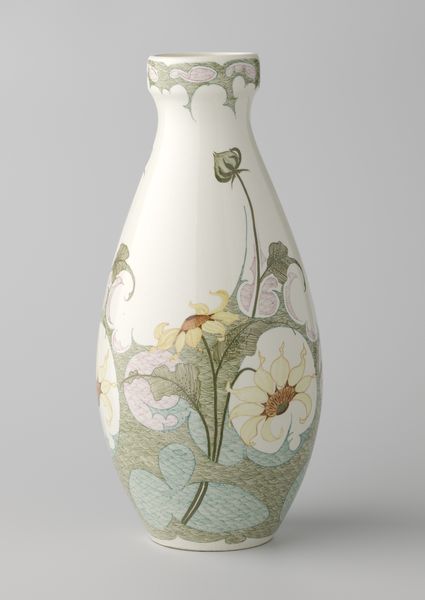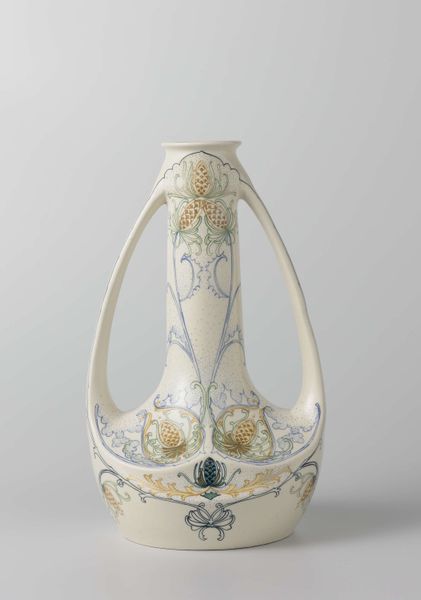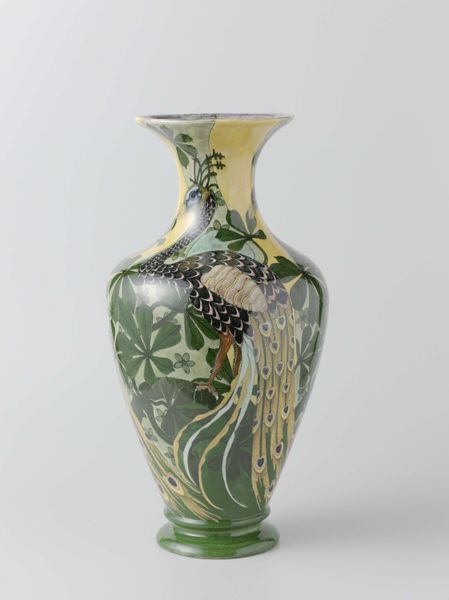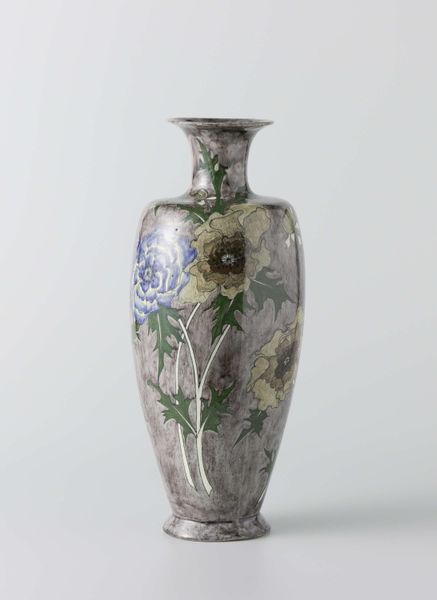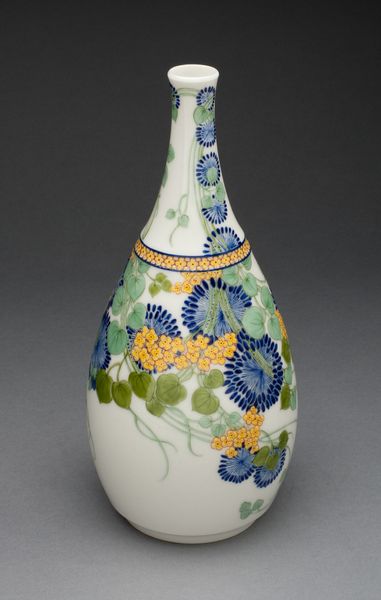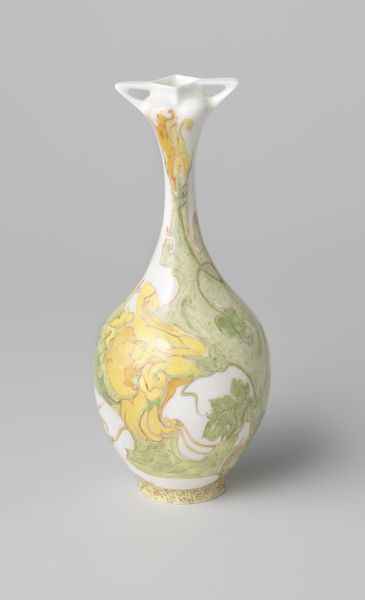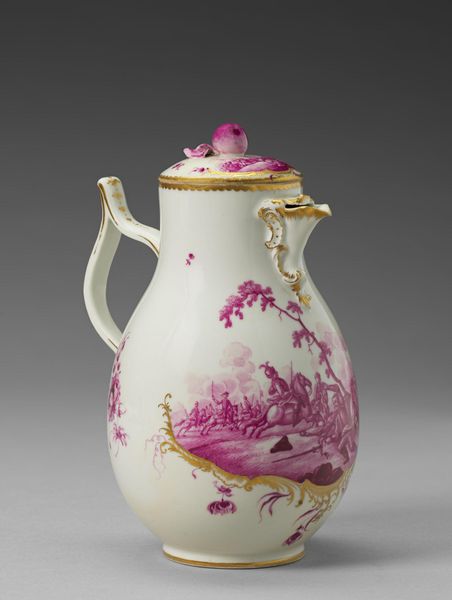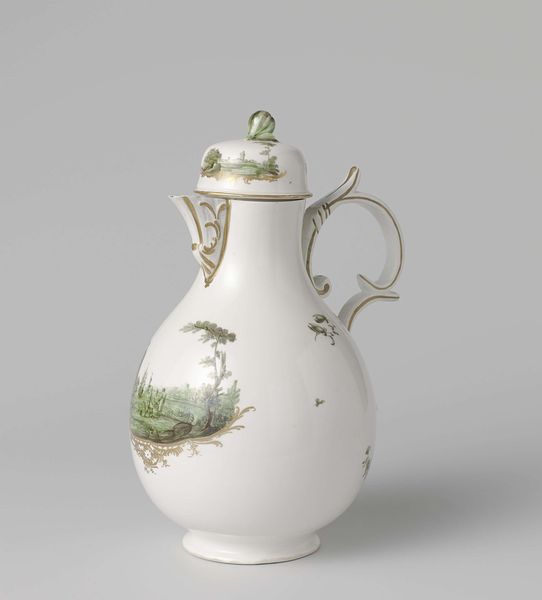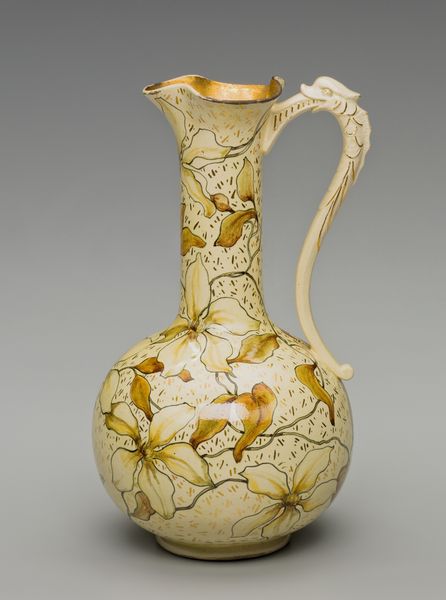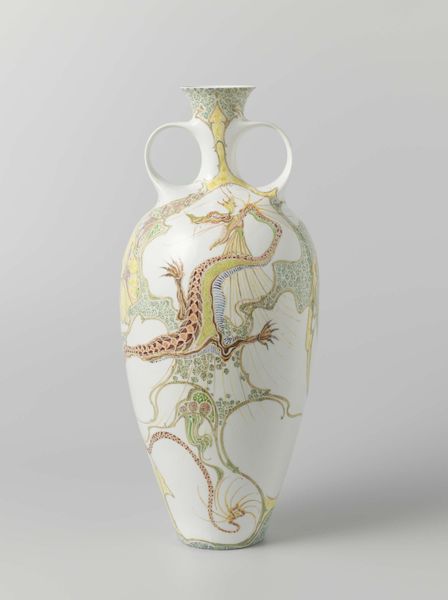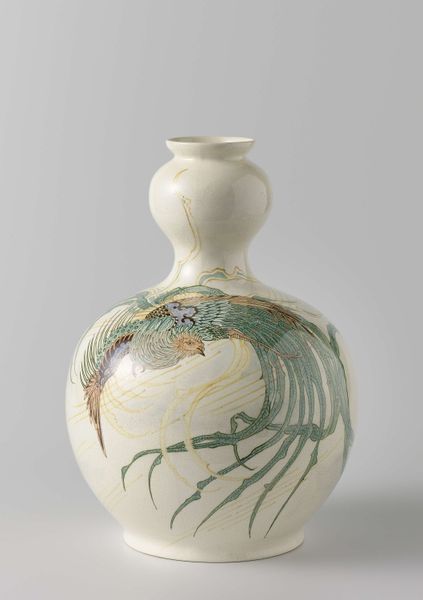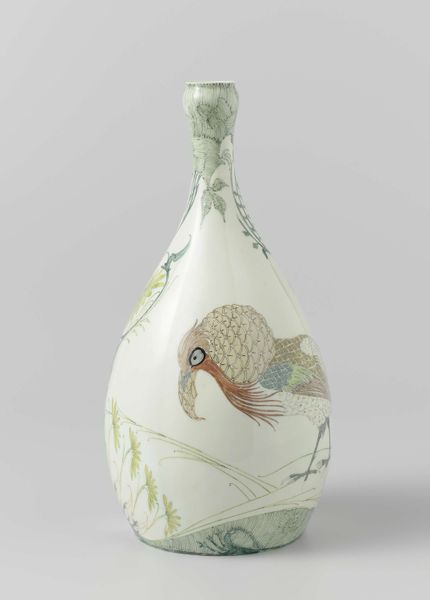
ceramic, earthenware
#
art-nouveau
#
ceramic
#
vase
#
earthenware
#
stoneware
#
ceramic
#
decorative-art
Dimensions: height 59.5 cm, diameter 25.0 cm
Copyright: Rijks Museum: Open Domain
Curator: Let's discuss this striking vase, "Vase with lily decoration", crafted around 1900 by N.V. Haagsche Plateelfabriek Rozenburg. Editor: My immediate impression is one of elegance and muted joy. The form, with its subtle curves and that curious loop at the top, creates an impression of restrained opulence. Curator: Absolutely. Note the refined lines of the Art Nouveau style, here expressed through a carefully calibrated composition. The surface design complements its structure, reinforcing the overall effect of fluid harmony. Editor: The lilies! Lilies, of course, have long been associated with purity, renewal, even resurrection. Seeing them here, stylized as they are, suggests an idealized, perhaps romanticized view of nature. Curator: Indeed. However, observe how the earthenware, though subtly painted, retains a quality of grounding—it’s not trying to imitate porcelain. The artist focuses on form and painted ornamentation. The color palette—primarily creams, light greens, and pale yellows—enhances this harmonious composition. Editor: But isn't there a hint of melancholy? The lilies, while beautiful, also signify fleeting beauty, their delicacy suggesting vulnerability. Curator: Possibly, or perhaps it reflects the symbolic language prevalent at the time. Floral motifs were common, representing not just nature but deeper human emotions. The vase doesn’t shout; instead, it quietly alludes to a complex understanding of life and art. Editor: You’re right; there’s an intentional restraint. It is interesting how cultural ideals are embodied within decorative art objects. Curator: I think that’s what makes it a fascinating specimen within decorative art; it marries form and meaning beautifully. Editor: Precisely. Delving into the symbolic and structural aspects unveils fresh perspectives. Curator: Agreed, examining art through both formal qualities and symbolic content is enriching.
Comments
rijksmuseum about 2 years ago
⋮
The Rozenburg porcelain works presented porcelain of this type at the Exposition Universelle in Paris in 1900. The material it was made of was unusual and pioneering – the thinnest of eggshell porcelain. The vases have flowing shapes, with harmonious swirling ornamentation, such as colourful plants, an oriental dragon and birds.
Join the conversation
Join millions of artists and users on Artera today and experience the ultimate creative platform.
